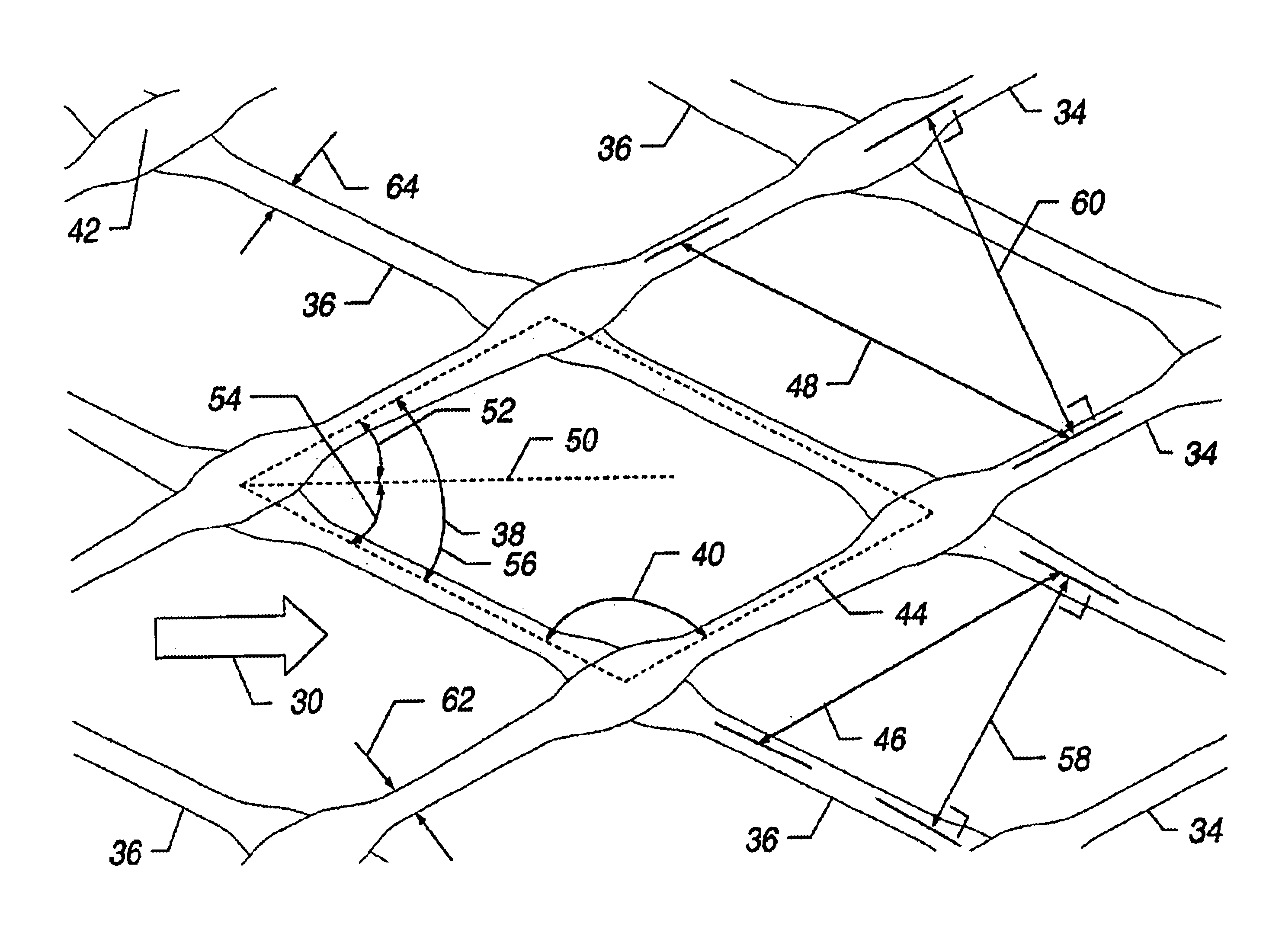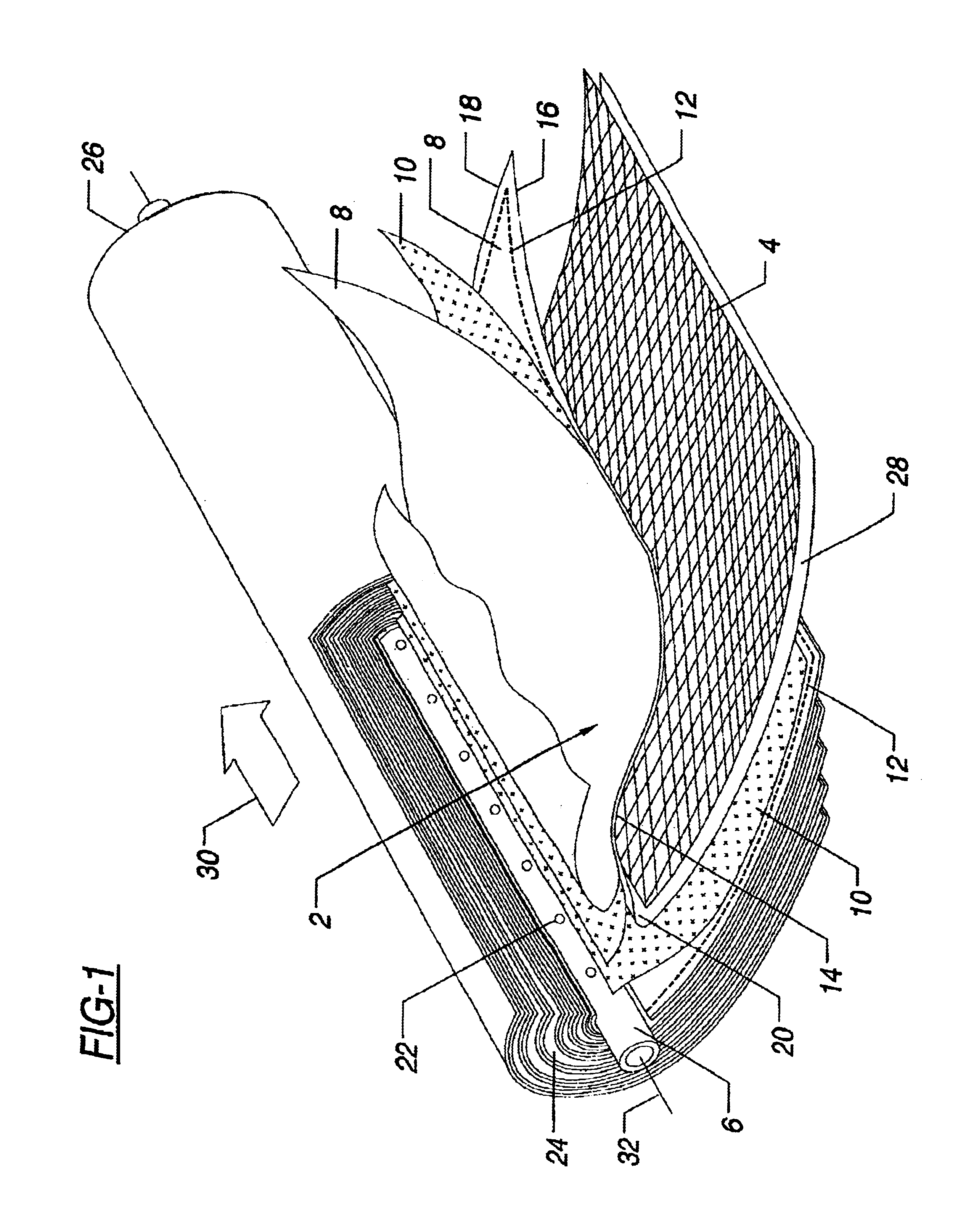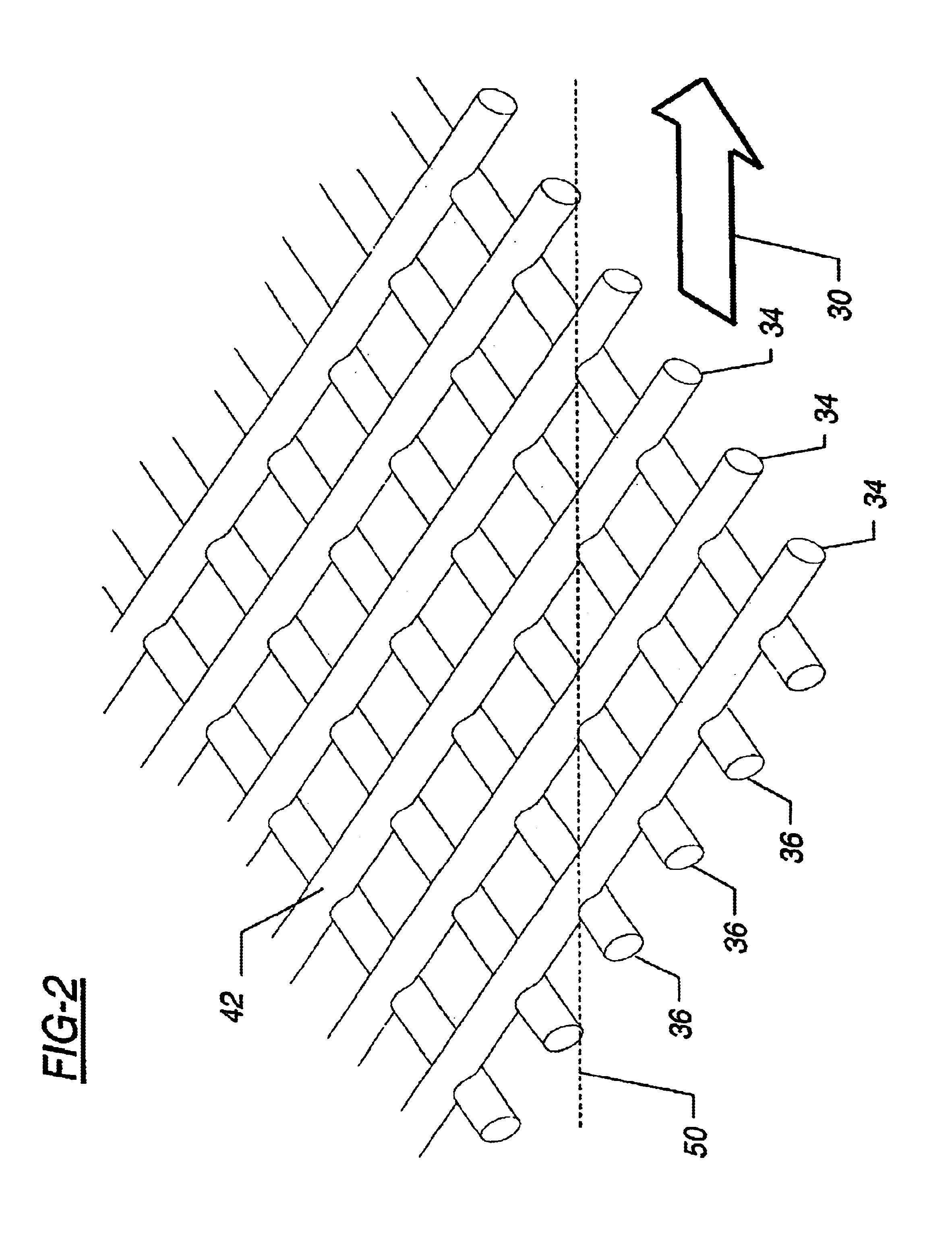Spiral wound element with improved feed space
- Summary
- Abstract
- Description
- Claims
- Application Information
AI Technical Summary
Benefits of technology
Problems solved by technology
Method used
Image
Examples
examples
[0061]While not intending to limit the scope of invention, the present invention is further illustrated by the following non-limiting examples:
example i
[0062]A feed spacer was made according to the process described below: As is typical in the art, a tubular net was formed by crossing two sets of filaments simultaneously extruded from two concentric, counter-rotating dies. The tubular structure was pulled over a mandrel and quenched in a water bath. After slitting, the resulting flat net had a width of 48.3 cm, a strand spacing of 2.12 mm, an average net thickness of 0.94 mm, and a characteristic angle of 85°. The slitting defined a machine direction for the net that was approximately parallel to the line bisecting the characteristic angle.
[0063]In parting from the conventional process of forming feed spacers for spiral wound elements, a tentering step was added to the process. The flat net was heated and stretched perpendicular to the machine direction. This tentering was done at 100° F. (Tentering may be performed over a wide range of temperatures, as described in U.S. Pat. No. 4,152,479. It was found that lower temperatures adva...
examples ii and iii
[0066]A process similar to that described in Example I was used to fabricate two other approximately symmetric feed spacers. Geometric properties measured for the two nets, before and after tentering, are shown in Table I. Based on width ratios, the tentering process stretched each net by more than a factor of two. Table I also lists the pressure gradient measured when water at 25° C. was caused to flow through the flat cell unit at 15 cm / sec. In these measurements, the machine direction of the feed spacer sheet was oriented perpendicular to the flow direction resulting in hydrodynamic angles of 47.5° and 60°.
[0067]
TABLE IExample 1Example 2Example 3Width of spacer sheet before48.348.353.3tentering (cm)Strand spacing before tentering (mm)2.122.122.07Average net thickness before0.940.840.81tentering (mm)Characteristic angle before tentering85.082.080.0(degrees)Width of spacer sheet after tentering110.5125.7114.3(cm)Strand spacing after tentering (mm)3.283.282.82Average net thickness a...
PUM
| Property | Measurement | Unit |
|---|---|---|
| Thickness | aaaaa | aaaaa |
| Thickness | aaaaa | aaaaa |
| Pressure | aaaaa | aaaaa |
Abstract
Description
Claims
Application Information
 Login to View More
Login to View More - R&D
- Intellectual Property
- Life Sciences
- Materials
- Tech Scout
- Unparalleled Data Quality
- Higher Quality Content
- 60% Fewer Hallucinations
Browse by: Latest US Patents, China's latest patents, Technical Efficacy Thesaurus, Application Domain, Technology Topic, Popular Technical Reports.
© 2025 PatSnap. All rights reserved.Legal|Privacy policy|Modern Slavery Act Transparency Statement|Sitemap|About US| Contact US: help@patsnap.com



